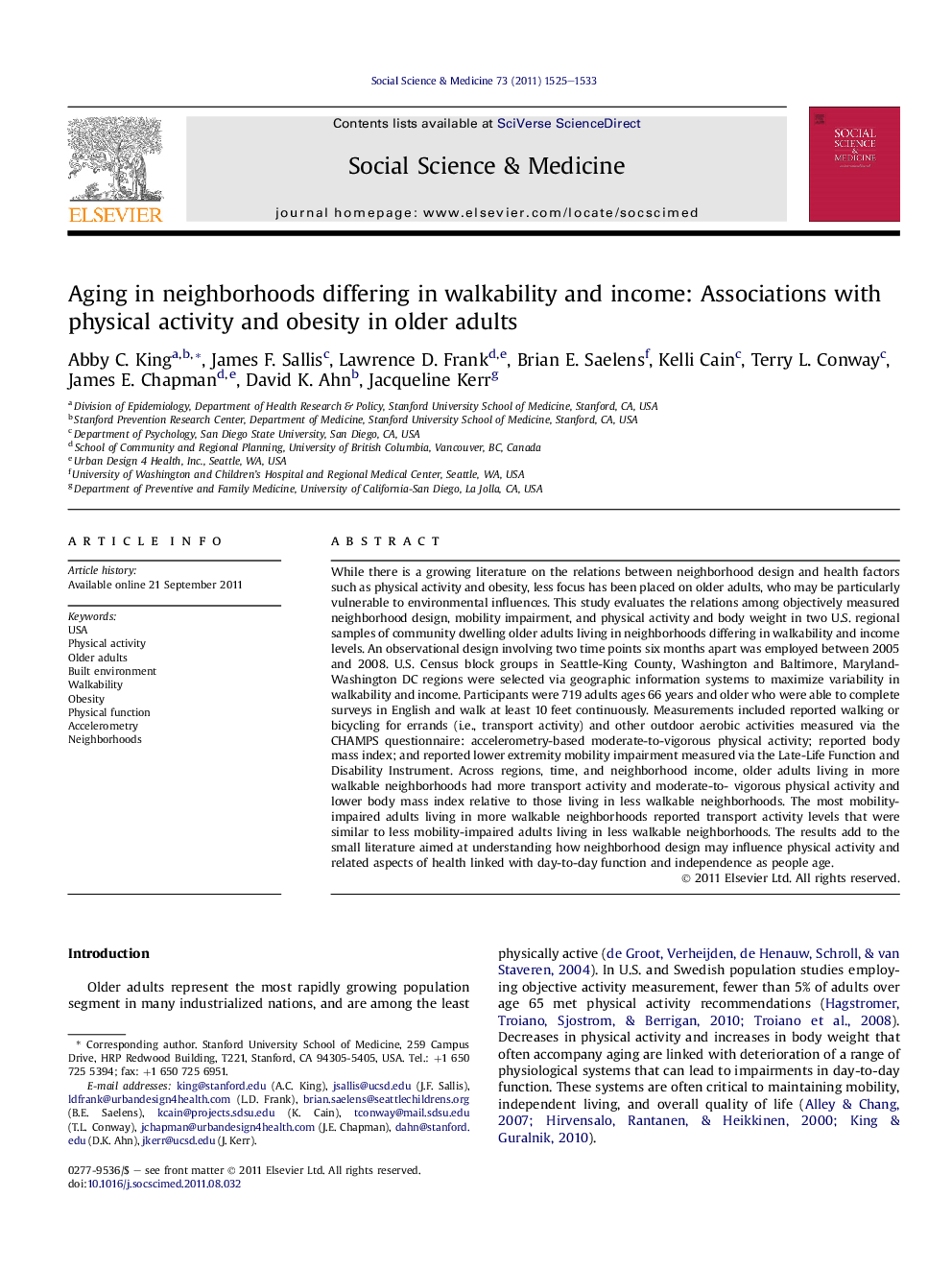| کد مقاله | کد نشریه | سال انتشار | مقاله انگلیسی | نسخه تمام متن |
|---|---|---|---|---|
| 952488 | 927517 | 2011 | 9 صفحه PDF | دانلود رایگان |

While there is a growing literature on the relations between neighborhood design and health factors such as physical activity and obesity, less focus has been placed on older adults, who may be particularly vulnerable to environmental influences. This study evaluates the relations among objectively measured neighborhood design, mobility impairment, and physical activity and body weight in two U.S. regional samples of community dwelling older adults living in neighborhoods differing in walkability and income levels. An observational design involving two time points six months apart was employed between 2005 and 2008. U.S. Census block groups in Seattle-King County, Washington and Baltimore, Maryland-Washington DC regions were selected via geographic information systems to maximize variability in walkability and income. Participants were 719 adults ages 66 years and older who were able to complete surveys in English and walk at least 10 feet continuously. Measurements included reported walking or bicycling for errands (i.e., transport activity) and other outdoor aerobic activities measured via the CHAMPS questionnaire: accelerometry-based moderate-to-vigorous physical activity; reported body mass index; and reported lower extremity mobility impairment measured via the Late-Life Function and Disability Instrument. Across regions, time, and neighborhood income, older adults living in more walkable neighborhoods had more transport activity and moderate-to- vigorous physical activity and lower body mass index relative to those living in less walkable neighborhoods. The most mobility-impaired adults living in more walkable neighborhoods reported transport activity levels that were similar to less mobility-impaired adults living in less walkable neighborhoods. The results add to the small literature aimed at understanding how neighborhood design may influence physical activity and related aspects of health linked with day-to-day function and independence as people age.
► Across two U.S. regions, objective neighborhood walkability predicted older adults’ physical activity irrespective of income.
► Neighborhood walkability–physical activity relations were similar using self-report and objective physical activity measures.
► Across income levels, older adults living in walkable neighborhoods weighed less than those in less walkable neighborhoods.
► Across mobility impairment level, older adults engaged in more walking or cycling for errands in more walkable neighborhoods.
Journal: Social Science & Medicine - Volume 73, Issue 10, November 2011, Pages 1525–1533